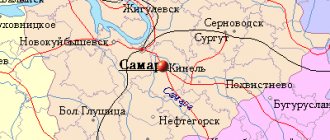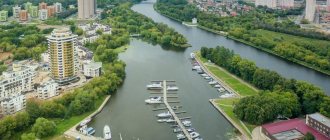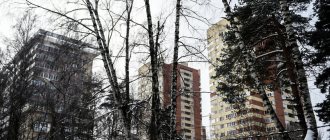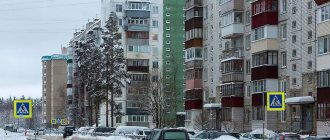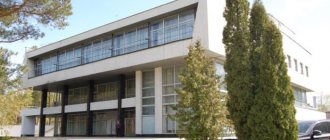Story
Some events in the history of Svirsk
| XIX | Settlements were founded near the Angara, including the villages of Svirskaya and Makarievo |
| 1931 | The Angarsk Metallurgical Plant was built between Makaryevo and Svirskaya |
| 1932 | The Cheremkhovo-Makaryevo railway line was built |
| 1934 | The first school, the oldest in the city, was opened in Makaryevo |
| 1935 | Construction of chemical current sources plant No. 389 has begun |
| 1939 | Plant No. 389 was put into operation. The village of Svirskaya has been transformed into a workers’ settlement, and a primary school has been opened there. |
| 1940 | On September 20, the plant of chemical current sources No. 389 was accepted by the State Commission. The first kindergarten "Rucheyok" was opened |
| 1941 | In August, the Leningrad Battery Plant was evacuated to Svirsky Plant No. 389 (later created on its basis). In December, a military hospital was set up at secondary school No. 1, which operated until May 1945. |
| 1946 | An electromechanical technical school was opened, which trained qualified personnel for |
| 1949 | In February, Makaryevsky repair and restoration workshops were organized, where equipment for assembly was delivered by rail, which was then sent by barge to plant No. 16, which was being built in Angarsk. On November 16, Svirsk was given city status |
| 1954 | City House of Culture opened |
| 1957 | Evening school for working youth opened |
| 1958 | The ore repair (now mechanical repair) plant was put into operation. A mechanical plant was created on the basis of repair and restoration workshops |
| 1960 | Barkhatovskaya timber transshipment base of Irkutsklesprom began to operate |
| 1960s | The following social facilities were built: kindergarten No. 17 “Bell” (1961); kindergarten No. 13 “Sun”; secondary school and vocational school (1963); sanatorium-type kindergarten No. 33 (1964); kindergarten No. 1 “Chamomile” (1968); hospital complex (1969) |
| 1967 | The Svirsky river port, one of the largest on the Angara, was put into operation |
| 1969 | A brick building of a hospital complex, a maternity hospital, a therapeutic, surgical and children's department was built |
| 1970 | Svirsky Mechanical Plant was transformed into |
| 1970s | The Berezovsky general education and children's music school was introduced (1970); secondary school No. 2 (1973); House of Pioneers (1975); station for young technicians (1989) |
| 1982 | A museum of the history of Svirsk has been created |
| 1991 | The joint Russian-Japanese timber processing enterprise “TM Baikal” was launched (with a capacity of 120 thousand m3 of lumber per year) |
| 2007 | Svirsk became an independent municipal entity at the regional level |
- Svirsk // “Historical Encyclopedia of Siberia” (2009)
- Svirsk // Great Soviet Encyclopedia, 3rd ed. (1969-78)
Svirsk city, Irkutsk region
Historical reference
In the first half of the 19th century, on the banks of the Angara there was a small settlement called Svirskaya. Gradually Svirskoye grew and transformed. After the civil war, after collectivization, which destroyed the traditional way of life of the Siberian village community, industrialization came. The Angarsk Metallurgical Plant (arsenic plant) was put into operation, construction began on the Cheremkhovo-Svirsk railway line, which played an important role in the formation of the city of Svirsk, the commissioning of facilities and the construction of its own thermal power plant began. Schools and kindergartens are being built. On September 20, 1940, the plant of chemical current sources No. 389 came into operation at existing enterprises in the country. Every third resident of Svirsk becomes an employee of the plant.
The Great Patriotic War went on thousands of kilometers from the Angarsk shores, but its cruel breath scorched the distant Siberian working-class village of Svirsk. More than two thousand Svir residents went to defend their homeland, every third did not return. From 1941 to 1945, Secondary School No. 1 of Svirsk housed a military hospital. In August 1941, the Leningrad Battery Plant was evacuated to the Svirsky Power Source Plant No. 389. Three months later, his first products went to the front. Subsequently, a city-forming city was created on its basis.
Svirsk received a new stage of development after the Great Patriotic War. By this time, Svirsk had outgrown the framework of a workers' village and on November 16, 1949 it was given the status of a city. The combination of the water surface of the Angara, the steep, forested banks of the right bank and the coastal terrace makes the surrounding terrain and the overall appearance of Svirsk picturesque. The visiting card of the city was the groves of ship pines on the shore and the cranes of the Svir river port. The post-war years were characterized by the dynamic development of leading factories. New enterprises are appearing (“Automotive Special Equipment”, “Mechanical Repair”, “Barkhatovskaya Timber Transshipment Base”), the social and cultural sphere is developing, sports, healthcare, housing is being commissioned.
During the difficult years of perestroika, the city of Svirsk withstood and survived. The city began to revive, the resources of Svirsk are beginning to be involved in effective economic circulation, and are beginning to work again for the city’s residents.
Geographical information: the city of Svirsk
Today, Svirsk is one of the most picturesque small towns in the Irkutsk region. The municipal entity “city of Svirsk” is the city of Svirsk and the Berezovy district. The administrative center of the municipality is the city of Svirsk.
The total area of the territory is 3,862.0 hectares.
The population of Svirsk is 13,585 people.
The city of Svirsk is located on the Irkutsk-Cheremkhovo Plain, on the left bank of the Angara River, 20 km from the Cheremkhovo railway station in the Irkutsk region, 150 km northwest of the city of Irkutsk.
Bordering - with the Cheremkhovo district municipality, the Usolsky district municipality, the city municipality "city of Cheremkhovo".
The municipal formation of the city of Svirsk is crossed by the railway line of Makaryevo station, the Eastern Railway branch of JSC Russian Railways. Travel time – to Cheremkhovo 30 minutes, to Irkutsk 3 hours.
The climate of the city of Svirsk is sharply continental. The terrain coefficient in the city is 1.0. The absolute maximum air temperature is 35.4C°. The absolute minimum air temperature is 43.8C°. The average outside air temperature in the hottest month of the year is 24C°. The average temperature of the coldest month of the year is 19.4C°. The average annual precipitation is 377 mm. Wind speed, the frequency of excess of which according to long-term data is 5%, is 7.5 m/sec.
The predominant winds in Svirsk are: northwestern and southeastern directions. The climate is favorable for the growth of many species, such as pine, larch, spruce, birch, and aspen.
The Angara River belongs to the highest category fishery watercourses. In the Angara River near the city of Svirsk, the following common fish species spawn and winter: pike, perch, roach, gudgeon, etc., and acclimatized species include omul, peled, bream, and hazel grouse. Valuable fish species - grayling, lenok, taimen, whitefish, sturgeon - are rare.
The geological structure of the territory includes Quaternary alluvial deposits, represented by seasonally frozen loam, hard loam and pebble soil with sandy aggregate up to 15% and underlain by dolomites of Cambrian age. On top of the deposits are covered with a soil-vegetative layer.
The standard depth of seasonal soil freezing is 3 m.
Seismicity of the territory of the city of Svirsk is 7 points.
Socio-demographic structure of the city of Svirsk
- Population: 13,585 people:
- men - 6,117 people - 45%
; - women - 7,468 people - 55%
;
- below working age - 2,657 people - 19,6
%; - working age - 8,060 people - 59,3
%; - over working age - 2,868 people - 21,1
%;
- Employed in the economy - 3,336 people;
- The share of people employed in the economy is - 24,6%
; - The average salary is 11,741 rubles;
- There are no payables for wages as of 01/01/2011;
- Average per capita cash income - 5,747 rubles;
- Living wage - 5,561 rubles;
- The share of the population with incomes below the subsistence level is - 22,26%
; - The level of registered unemployment is 4.5% (unemployed citizens - 363 people).
Socio-demographic processes are characterized by a decrease in population due to natural decline. In 2010, 176 people were born and 280 people died. The migration amounted to 106 people. Unfavorable environmental conditions and hazardous working conditions at basic enterprises of the city cause increased morbidity and premature mortality.
Characteristics of the industrial sector of the city of Svirsk
On the territory of the municipal formation “city of Svirsk” (hereinafter referred to as the municipal formation “city of Svirsk”) there are 410 business entities of various types of activities and forms of ownership, of which:
- 3 large and medium-sized enterprises;
- 50 small businesses;
- 30 municipal institutions;
- 323 IPBOYUL;
- 4 - others.
Revenue from sales of products, works, services (in current prices) for 2010 in the amount of 3624.4 million rubles. or 118.2% compared to 2009.
Goods of own production were shipped, works and services were performed on our own (excluding VAT and excise tax) in 2010 in the amount of 3572.4 million rubles. or 113.9% compared to 2009.
The volume of shipped commercial products to large and medium-sized enterprises in 2010 amounted to 1,608.2 million rubles. or 93.3% compared to 2009 (RUB 1,724.2 million).
The largest share in the total volume of shipped products is occupied by TM Baikal LLC.
The index of physical volume for industrial production amounted to 123.1% (2009 - 84.9%)
The city of Svirsk has a certain potential for sustainable development. Relative proximity to the regional center, partial preservation of the historical specialization of the economy, availability of free production space and land plots available for development.
Positioning of the municipality
A concept for the social and economic development of the municipal municipality “city of Svirsk” until 2022 in the amount of 26 billion 877 million rubles was developed and adopted by the Duma on December 23, 2010. The concept defines the principles and priorities necessary when making decisions on specific projects for the development of the economy and social sphere of the city of Svirsk. The concept has received the status of a municipal regulatory act and is the basis for current planning. The “Program of social and economic development of the municipal municipality “city of Svirsk” until 2011” was adopted in the amount of 25 billion 795 million rubles, of which federal budget funds should amount to 307 million rubles, regional funds - 779 million rubles, municipal funds - 305 million rubles. 24 billion 404 million rubles will be allocated from other sources (enterprises’ own funds, attracted investments, etc.). Such parameters for financing the concept and program have been agreed upon with the Ministry of Economic Development, Labor, Science and Higher Education of the Irkutsk Region.
Attracting investors to the city is one of the administration’s tasks. To this end, the Municipal Municipality “city of Svirsk” takes part in various competitions, exhibitions and fairs held both at the regional and All-Russian levels, and friendly relations have been established with representatives of Mongolia.
The Svirsk Local Community Charitable Foundation was created. Our municipal entity became the winner of the competition for the Municipal Development Program on the territory of the Russian Federation, announced by the Foundation for Sustainable Development with financial support from the US Agency for International Development. The total amount of financing for the complex of projects amounted to 51,243.1 US dollars, or 1,325,115.8 rubles. Currently, all three projects are fully funded.
Characteristics of the social sphere of the city of Svirsk
Education
The city's education system includes:
- 5 preschool educational institutions;
- 6 educational institutions;
- 3 institutions of further education.
The priorities of educational institutions are:
- updating the structure and content of education;
- development of state and public education management;
- improving the quality of educational services in the context of modernization of Russian education.
279_ teachers work in educational institutions of the city (51 people in preschool institutions, 168 people in schools, 34 people and 26 part-time workers in additional educational institutions). Of the total number of teaching staff, 25 people (8.9)% have been working for more than 10 years, 41 people. (14.7%) teachers of retirement age.
There are 1,675 schoolchildren studying in city schools. The average class size in the city was 18.2%.
The cost of feeding children in preschool institutions is 62 rubles, in schools - 25 rubles. (at the expense of parental fees), 10 rubles. - free food.
The average salary of teachers for 2010 was 9,396 rubles, employees of preschool educational institutions - 5,491 rubles.
Healthcare: city of Svirsk
On the territory of the municipal municipality "city of Svirsk" the provision of:
- emergency medical care for conditions that threaten the life or health of citizens or those around them, caused by sudden illnesses, exacerbations of chronic diseases, accidents, injuries and poisonings, complications of pregnancy and childbirth;
- outpatient care;
- inpatient care;
- medical care provided in day hospitals of all types (including hospitals at home).
To provide medical care, the municipal municipality "city of Svirsk" has:
- Inpatient facility (year of construction: 1969−1972): therapeutic department with 30 24-hour hospital beds and 25 day hospital beds;
- gynecological department 10 24-hour hospital beds and 5 day hospital beds;
- children's department 10 24-hour hospital beds and 10 day hospital beds;
- infectious diseases department 10 beds in a 24-hour hospital, 5 beds in a day hospital.
Outpatient care is provided (year of construction: 1978−1980):
- a clinic for children for 150 visits per shift;
- a clinic for the adult population for 350 visits per shift.
The clinic operates a therapeutic day hospital with 20 beds, and also provides inpatient care at home to adults and children.
On the territory of the municipal district of Svirsk, municipal programs were adopted until 2010:
- "Baby food industry";
- "Diabetes";
- “Bronchial as.
The number of employees in the healthcare institution is 229 people. (100.4% of the figure as of January 1, 2006), of which 23 were doctors. (121%), nursing staff - 117 people. (133%).
Through the participation of the MLU “Hospital of Svirsk” in the national project “Health” in 2006, the following was obtained:
- ultrasound device;
- Schiller cardiograph;
- FGDS apparatus;
- 2 ambulances;
- X-ray machine “CLINOMAT”;
- dosimeter DRC.
The city receives vaccines under the Vaccine Prevention program.
In general, the “Health” project attracted about 6.3 million rubles to the territory, both in the form of equipment and in the form of other payments.
The municipal medical institution "Hospital" in Svirsk carries out medical activities on the basis of license No. LO-38-01-000265 dated May 28, 2009, granted for a period until May 28, 2014.
As of April 2011
Geography
It is located in the central part of the Irkutsk-Cheremkhovo Plain, at an altitude of 420 m above sea level. It is surrounded from the west and east by hills rising on both banks of the Angara, as well as forests and vast agricultural lands.
The average long-term duration of the frost-free period in Svirsk is about 100 days. The first frosts occur in the second ten days of September, the last - at the end of May. The average monthly temperature in January is -21 °C (absolute, -43.8 °C), July + 18 °C (absolute, +35.4 °C). The average annual temperature is -1.4°C.
Map
Svirsk: photo from space (Google Maps) Svirsk: photo from space (Microsoft Virtual Earth)
| Svirsk. Nearest cities. Distances in km. on the map (in brackets along roads) + direction. Using the hyperlink in the distance , you can get the route (information courtesy of the AutoTransInfo website) | |||
| 1 | Mikhailovka | 13 () | YU |
| 2 | Cheremkhovo | 20 (22) | NW |
| 3 | Taiturka | 24 (107) | YU |
| 4 | Mishelevka | 26 () | SW |
| 5 | Bohan | 30 (279) | IN |
| 6 | Belorechensky | 31 () | YU |
| 7 | Usolye-Sibirskoye | 41 (90) | SE |
| 8 | Thelma | 49 () | SE |
| 9 | Wasp | 49 (305) | NE |
| 10 | Kutulik | 49 (52) | NW |
| 11 | Angarsk | 69 (119) | SE |
| 12 | Zalari | 76 (83) | NW |
| 13 | Novonukutsky | 81 (103) | NW |
| 14 | Meget | 87 () | SE |
| 15 | Khomutovo | 97 (187) | SE |
| 16 | Ust-Ordynsky | 99 (224) | IN |
| 17 | Balagansk | 105 (159) | WITH |
| 18 | Irkutsk | 109 (163) | SE |
| 19 | Shelekhov | 109 (183) | SE |
| 20 | Markova | 112 () | SE |
| 21 | Youth | 118 () | SE |
a brief description of
Located on the Irkutsk-Cheremkhovo Plain, on the left bank of the river. Angara, 20 km from the railway. Cheremkhovo station, 150 km northwest of Irkutsk. River port (Cheremkhovo coal is exported, and timber is delivered to mines and open-pit mines).
Territory (sq. km): 39
Information about the city of Svirsk on the Russian Wikipedia site
Historical sketch
Workers' settlement of Svirskoye since 1939. City of Svirsk since 1949.
Economy
, "Vostsibelement" (produces batteries), for the repair of mining equipment.
Main enterprises
ELECTRICAL INDUSTRY
OJSC "Vostsibelement"
665427, Irkutsk region, Svirsk,
Offers:
Car batteries
FORESTRY INDUSTRY
JSC JV "TM Baikal"
, Irkutsk region, Svirsk,
Offers:
Lumber
| Population by year (thousands of inhabitants) | |||||||
| 1959 | 21.2 | 1998 | 19.3 | 2008 | 14.4 | 2016 | 13.1 |
| 1967 | 23 | 2000 | 18.6 | 2010 | 14.2 | 2017 | 13.1 |
| 1970 | 20.5 | 2001 | 18.4 | 2011 | 13.7 | 2018 | 12.9 |
| 1979 | 21.8 | 2003 | 15.5 | 2012 | 13.4 | 2019 | 12.8 |
| 1989 | 19.2 | 2005 | 15.0 | 2013 | 13.1 | 2020 | 12.8 |
| 1992 | 19.5 | 2006 | 14.7 | 2014 | 13.1 | 2021 | 12.7 |
| 1996 | 19.8 | 2007 | 14.5 | 2015 | 13.2 | ||
Transport accessibility
Svirsk is located aside (20 km to the east) from the Trans-Siberian Railway and the Baikal federal highway (Novosibirsk-Irkutsk).
The city is connected to the Trans-Siberian Railway by a railway line laid from the Cheremkhovo station to the Makarievo station (19 km), along which only freight transport is currently carried out.
The city is connected to the federal highway P255 “Siberia” by several roads passing through Kasyanovka and Cheremkhovo (about 20 km), as well as through the village of Barkhatova and the village of Mikhailovka (22 km).
Svirsk has passenger connections (by buses and minibuses) with district and regional centers. The distance from Svirsk to Irkutsk by road is 158 km, by rail - 150 km.
A special place in the economy of Svirsk is occupied by river transport, which transports goods and passengers along the Angara. In 1967, the large Svir river port was put into operation. In Soviet times, up to 3 million tons of various cargo passed through the Svir port. Currently, the annual total volume of transportation of all cargo is about 400 thousand tons. In recent years, the port has served mainly the timber processing industry. Navigation in the port of Svir begins on May 25 and ends on October 20.
Social sphere
City educational institutions
- Municipal educational institution "Secondary school No. 1 of Svirsk"
- Municipal educational institution "Secondary school N2" in Svirsk
- Municipal educational institution "Secondary school N3" in Svirsk
- MOU "Makaryevskaya comprehensive school"
- Municipal educational institution "Basic secondary school in the village of Berezovy" in the city of Svirsk
- Svir Electromechanical College (since 1949)
City preschools
- MDOU No. 1 Kindergarten "Romashka"
- MDOU No. 2 Kindergarten "Bell"
- MDOU No. 3 Kindergarten "Rainbow"
- MDOU No. 22 Kindergarten "Rostok"
- MDOU No. 33 Kindergarten "Sanatorny"
Institutions of additional education for children
- The House for arts and crafts for children
- Children's youth sports school
- Children's art school
- Children's music school
Since 1949, an electromechanical technical school has been operating, where personnel were trained for other similar enterprises in the country. Now it is a regional educational institution and provides training at two levels: primary vocational education (children receive specialties as a cook, electric and gas welder, tailor, repairman, turner); secondary vocational education (specialties “Electrochemical production”, “Mechanical engineering technology”, “Car maintenance”, “Welding production”).
Since 1963, a vocational school has been operating, which also trained workers for (car mechanic, electrician, turner, repairman, driver, assembler of galvanic cells and batteries). Now the list of professions has been adjusted in accordance with the needs of the market and the specific requests of employers.
There is a House of Children's Creativity (formerly the House of Pioneers, built in 1975), in which about a thousand children and adolescents study in various areas (physical education and sports, artistic and aesthetic, cultural studies, environmental and biological, social and pedagogical). There is also a station for young technicians (311 students attend it), a children's and youth sports school (653 students), where classes are conducted in basketball, football, athletics, volleyball, cross-country skiing, Greco-Roman wrestling, chess, and swimming.
Healthcare
On the territory of the municipal formation "city of Svirsk" the provision of emergency, outpatient, and inpatient medical care is organized. The city has a 24-hour hospital with therapeutic (30 beds), gynecological (10 beds), children's (10 beds) and infectious diseases (10 beds) departments. Outpatient care is provided by adult (350 visits per shift) and children's (150 visits) clinics, which operate a day hospital.
Culture
Municipal cultural institutions:
1. Municipal institution “City Library” of the municipal formation “city of Svirsk”.
2. Municipal institution City Cultural Center of the municipal formation “city of Svirsk”. Its structural divisions:
- House of Culture "Rus";
- Club "Makaryevo";
- House of Culture "Berezovy"
- Museum of City History;
- Park of culture and recreation2.
Religion
- Church of the Annunciation of the Blessed Virgin Mary in Svirsk


